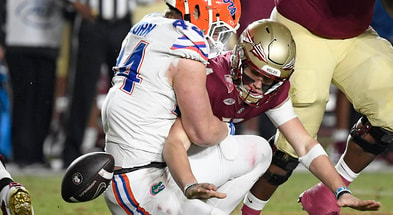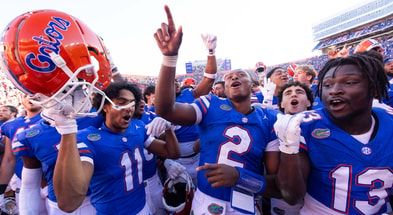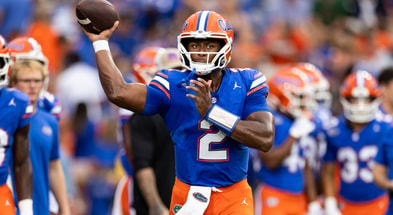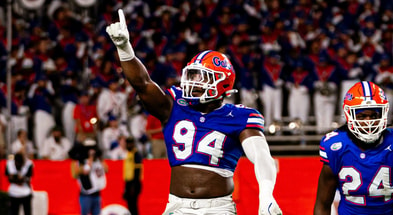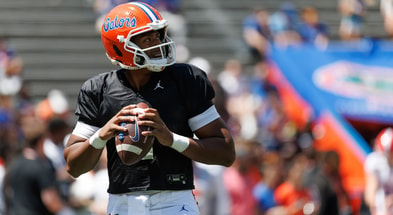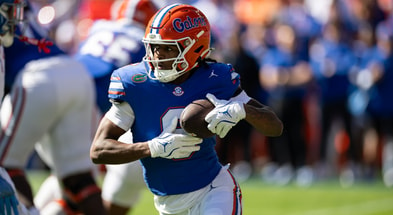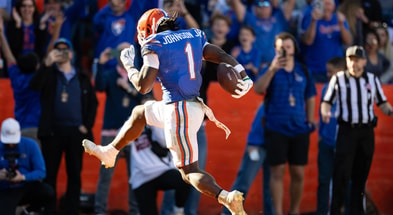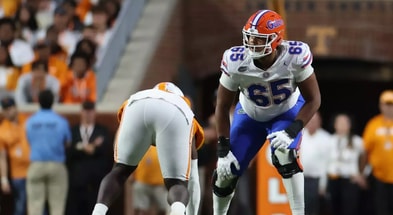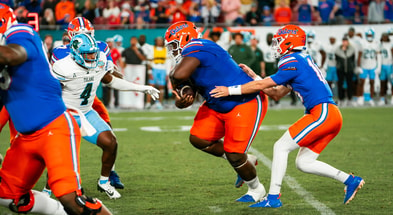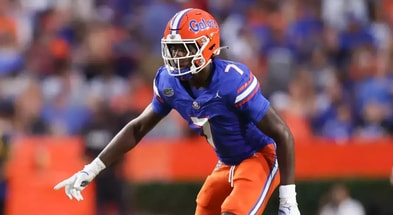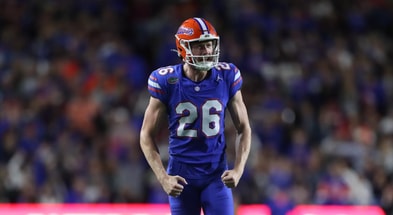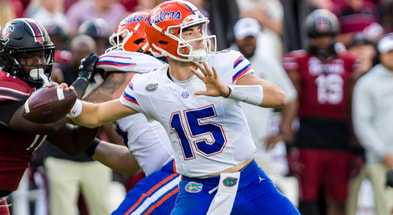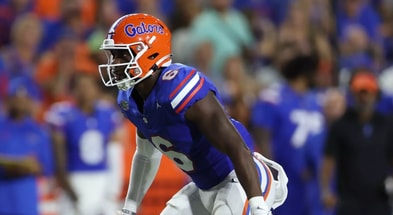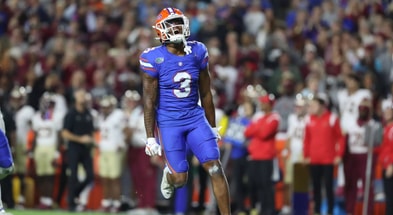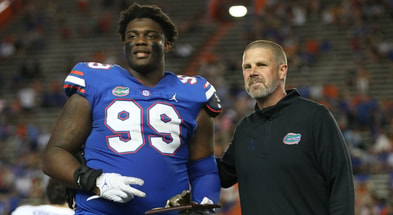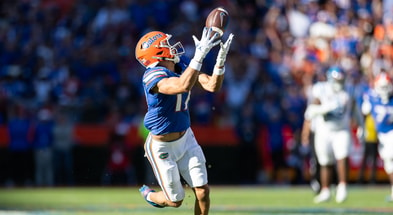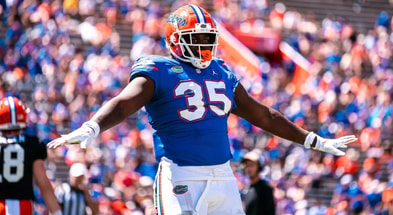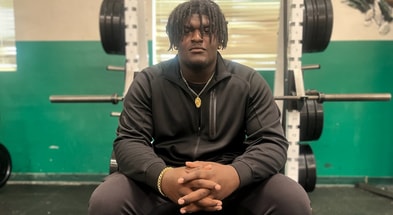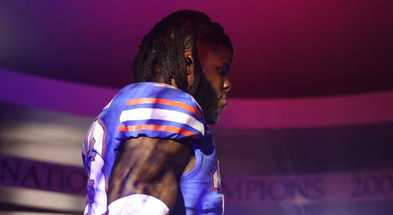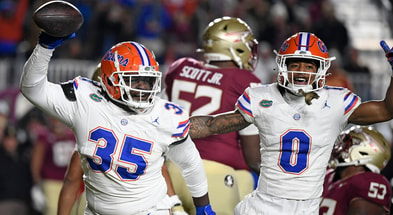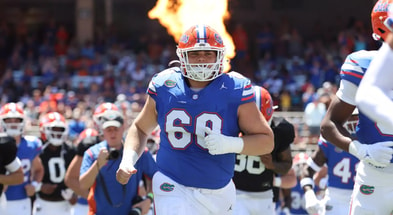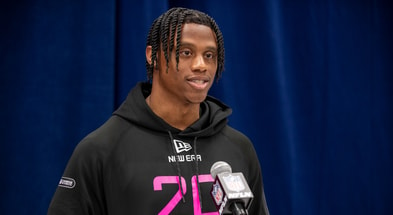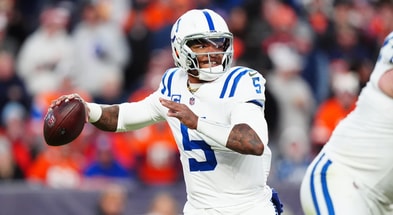Why Billy Napier chose to go for two in the fourth quarter

KNOXVILLE, Tenn. — Montrell Johnson hit the edge and got into the checkered end zone of Neyland Stadium to pull the Florida Gators within 11 points of Tennessee. With just 4:49 left in the game, most fans expected Billy Napier to kick a field goal, make it a 10-point game, and try for the onside kick.
Instead, the offense was left on the field. Florida’s conversion attempt died as Anthony Richardson’s pass was too hot for Justin Shorter to handle in the back of the end zone.
Why did Napier choose to go for two in that situation? Why is it better to be down nine points instead of 10? It’s a two-score game either way.
Florida would get the ball back and score again on its next drive, cutting the deficit to 38-33. Now, because you missed the two-point conversion before, you had to go for it again. For the second time in a row, the conversion attempt failed, and it was a four-point game.
Fans were quick to point out that if the Gators kicked the PAT both times, they would have only needed a field goal to tie the game and send it to overtime. Napier’s aggressiveness had cost Florida the game.
To start, you have to look back at the beginning of the game. The Gators made it loud and clear that they were going to be aggressive. Florida went for it on fourth down SIX times on Saturday night in Neyland.
“I think it was required given the matchups and dynamics in the game,” Napier said when he was asked about how aggressive UF was on fourth down. “For the most part it paid off.”
Richardson echoed that statement.
“Especially knowing the offense because there’s plenty of plays where he tells us, maybe seven yards is the goal,” Richardson explained. “If we’re within seven yards we’re going to go of it on fourth. That’s pretty much instilled in us that we’re gonna be aggressive and play aggressively. It’s definitely good.”
Top 10
- 1Breaking
Rivals x On3
On3 acquires Rivals
- 2Hot
Paul Finebaum
Josh Heupel job security
- 3Trending
Bill Belichick
CBS News fires back at UNC coach
- 4
Jordan Travis
Retires from football
- 5
Ian Schieffelin
Joining Clemson football team
Get the On3 Top 10 to your inbox every morning
By clicking "Subscribe to Newsletter", I agree to On3's Privacy Notice, Terms, and use of my personal information described therein.
Now, back to the decision to go for it.
When to go for two
Here’s a handy chart that many coaches who are into analytics will use when deciding whether to go for a two-point conversion or kick the extra point.
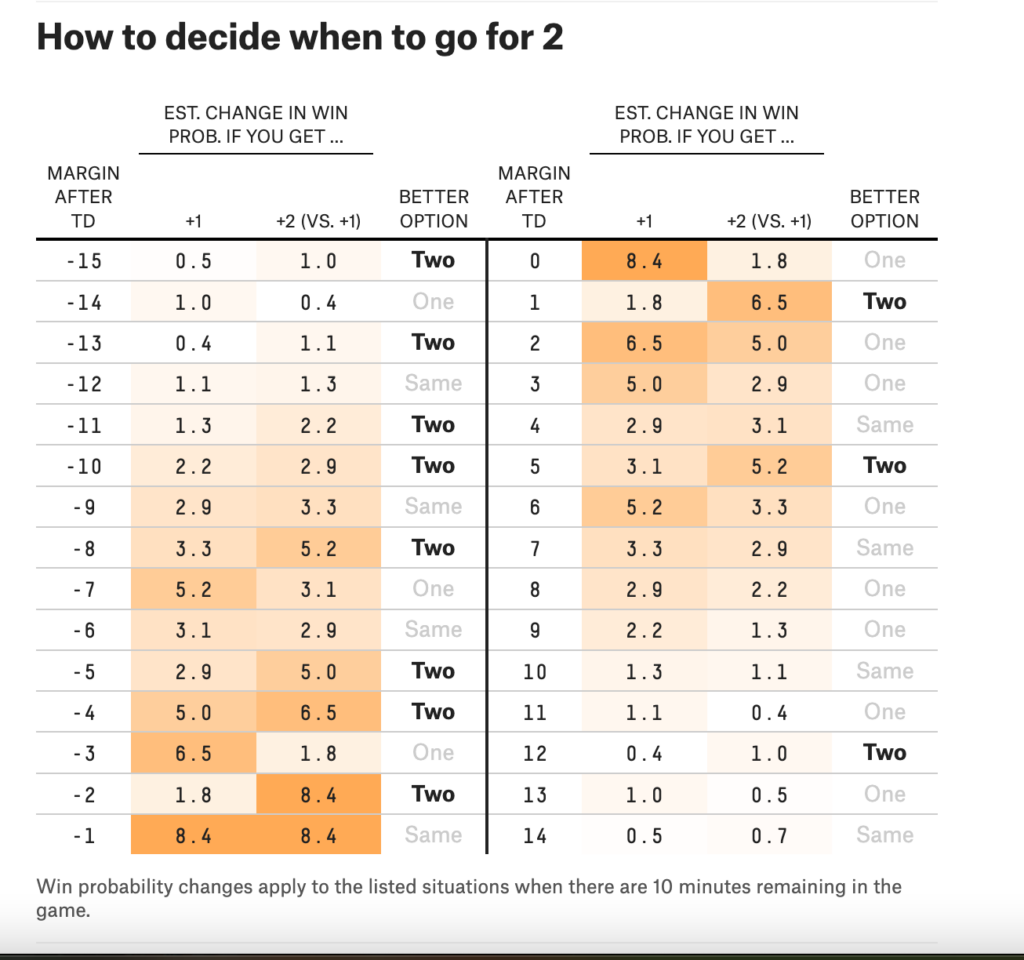
The chart shows that it is statistically better to go for two when you’re trailing by 11. Napier has a team of quality control assistants in the booth and on the sidelines helping shape the game plan and make decisions.
Going for two when down 11 also will dictate how you play the rest of the game. The object of the exercise was not to play for an extra period when your defense was busy getting gashed for 576 yards. Florida’s kicker had already missed his lone field goal try as well. But mostly, Napier wasn’t playing for overtime on the road. He called the game to win it in regulation.
Napier showed his hand on the first drive of the game and was aggressive Saturday night. Florida was going to go all out to win the game. When he had the chance, he was going to roll the dice.
You can’t love the “scared money don’t make money” mentality and be mad when brave money loses money.

